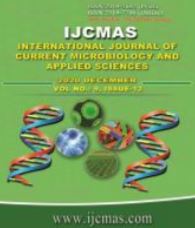


 National Academy of Agricultural Sciences (NAAS)
National Academy of Agricultural Sciences (NAAS)

|
PRINT ISSN : 2319-7692
Online ISSN : 2319-7706 Issues : 12 per year Publisher : Excellent Publishers Email : editorijcmas@gmail.com / submit@ijcmas.com Editor-in-chief: Dr.M.Prakash Index Copernicus ICV 2018: 95.39 NAAS RATING 2020: 5.38 |
Plant protein plays significant role in the world protein demand. It provides nearly 65% of the world human protein requirements. Pigeon pea, Cajanus cajan, [(L.) Millspaugh], a perennial legume, is a major grain legume crop ranked sixth in area and production globally. Pigeon pea is an adequate source of starch, protein, crude fiber, fat, trace elements, and minerals in human diets used in dhal and as a green vegetable. Nutritional composition is the most essential prerequisite for any successful crop improvement programme and this necessitates the analysis of pigeon pea germplasm from Assam Agricultural University (AAU) seed bank. In the present study, 10 pigeon pea germplasm were evaluated for their biochemical composition to check any genetic variation amongst them. Moisture content was in the range of 71.31- 132.53 (mg/g), crude fibre 53.28-103.25 (mg/g), ash 35.08 - 40.33 (mg/g) and crude fat 11.75 – 23.10 (mg/g), crude protein 23.37- 26.82 % and nitrogen free extract (NEF) were found in the range of, 54.46 – 64.70% on dry weight basis respectively in the ten pigeon pea germplasm under study. Pigeon pea is a good protein source that poses a great potential in northeast parts of Indian foods products as well as for promotion the functional property in different food. Further, the two way cluster dendrogram and principal component analysis showed the influence of these biochemical parameters on nutritional composition in studied Cajanus cajan germplam.
 |
 |
 |
 |
 |